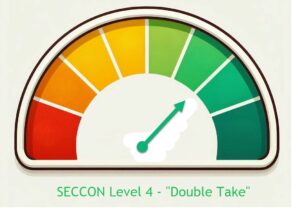Creating an effective IT disaster plan for use during hurricanes and other weather emergencies empowers your organization to not only reduce risks but also bounce back swiftly from unforeseen disruptions.
With a solid strategy in place, you can overcome challenges and uphold your operational efficiency and customer trust with confidence.
Start your preparations well ahead of storm season to enable thorough testing and valuable adjustments to your plan.
Take a proactive stance by evaluating your current systems to uncover vulnerabilities that could make a bad situation much worse.
Incorporating regular training and drills will ensure that every team member is well-versed in the procedures and ready to take action during an emergency.
Here are a few tips to get you started:
1. Assess Your Risks
-
-
- Identify Vulnerabilities: Understand which types of disasters are most likely to affect your business. This could include hurricanes, floods, or even cyberattacks.
- Conduct a Risk Assessment: Evaluate your business’s specific vulnerabilities and weaknesses to better prepare for potential disruptions.
-
2. Create a Disaster Plan
-
-
- Develop a Response Plan: Tailor your plan to your business’s needs and operations. Include steps for protecting employees, securing property, and maintaining operations
-
- Communication Strategy: Establish how you will communicate with employees, customers, and suppliers during and after a disaster.
- Backup Location: Decide on an alternate location where your business can operate if your primary site is damaged.
-
3. Protect Your Property
-
-
- Physical Protections: Install shutters or plywood to protect windows, secure large furniture, and sandbag areas prone to flooding.
-
- Utilities and Equipment: Secure and elevate utilities and critical equipment to prevent water damage. Do not move computers while they are on. Unplug computers and related equipment while taking notes of how they were put together and put them up on tables and desks and cover them with tarp or trash bags.
- Backup your Computer Data: Be sure all important data on your computers is backed up into a safe location.
-
4. Safeguard Important Documents
-
-
- Backup Critical Information: Store important documents like insurance papers, legal contracts, and financial records in waterproof containers and back them up off-site or in the cloud.
- Maintain Contact Lists: Keep an up-to-date list of key contacts, including employees, suppliers, and emergency services.
-
5. Train Your Employees
-
-
- Emergency Preparedness Training: Ensure all employees are familiar with the disaster plan and know their roles during an emergency.
-
- Employee Policy: Make sure employees are aware of company policies designed to protect your business and data and that they follow them—keep this info in your Employee Manual.
- Regular Drills: Conduct regular drills to practice the plan and make sure everyone is prepared.
-
6. Review Insurance Coverage
-
-
- Adequate Coverage: Make sure your insurance covers all potential risks, including business interruption insurance, liability insurance, and cybersecurity insurance.
-
- Document Assets: Take a video inventory of your property and assets to facilitate insurance claims.
- After the Emergency: If you have equipment damage, hang on to it if you plan to file a claim for a minimum of 60 days for adjuster inspection.
-
7. Financial Preparedness
-
-
- Disaster Recovery Loans: Be aware of financial assistance options like SBA disaster recovery loans for repairing and replacing damaged assets.
- Emergency Fund: Maintain an emergency fund to cover immediate expenses following a disaster.
-
8. Build Resilience
-
-
- Consider The Cloud: The cloud can provide a great measure of resilience to allow your SMB to continue operations from anywhere, with everything from full production to backup restoration.
-
- Stay Mobile: Mobile devices can be used anywhere and combined with cloud technology, make it convenient to compute and manage your business on the go.
- Business Resilience Guide: Utilize resources like the SBA’s Business Resilience Guide to help your business quickly recover and adapt after a disaster.
-
By taking these steps, small businesses can better prepare for hurricanes and other disasters, ensuring they can quickly resume operations and minimize disruptions.








